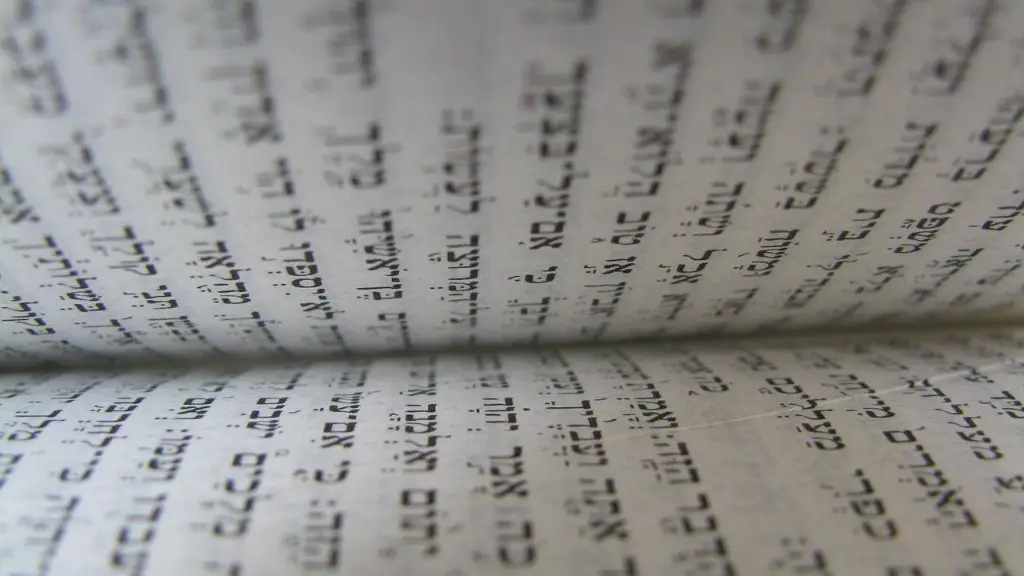Rastafarianism is a religion and way of life that has been gaining attention in recent years, but the questions still remain: is Rastafarianism a type of Christianity? Does it have its own beliefs, or is it just a subset of a larger religion? In this article, we’ll explore Rastafarianism in-depth, so that you can make up your own mind.
At its core, Rastafarianism is a spiritual movement that has its origins in Jamaica and began in the 1930s. Rastafarians believe in a higher source of power, often referred to as the Creator or Jah. The majority of Rastafarians also follow the teachings of Marcus Garvey, who preached a type of racial emancipation that empowered African people. Rastafarian beliefs incorporate elements from several other religious traditions, from Christianity to Native religions to Judaism.
However, Rastafarianism is most strongly connected to Christianity, and many Rastafarians consider themselves part of the Christian faith. At the same time, there are many unique aspects of Rastafarianism, such as its own morality, diet, and code of dress. The most sacred text of Rastafarianism is the Holy Piby (or The Black Man’s Bible), which was written in 1919 by Robert Athlyi Rogers, a religious leader in Jamaica. The Piby contains many of the beliefs that define Rastafarianism, including the doctrine of repatriation, or the belief that Africans should return to Africa.
Rastafarianism also has its own rituals and practices, such as the lighting of candles and prayer, and is unique in that it does not contain anytype of formal church structure. Rather, meeting places known as “Grounds”, where community members come together to share ideas and discuss current issues, are the focus. It is also important to note that while many Rastafarians identify as Christian, they often reject traditional Christian belief systems and emphasize individual interpretations of scripture.
In terms of theology, the most distinctive feature of Rastafarian belief is the identification of the Ethiopian emperor, Haile Selassie I, as the second coming of Christ. Many Rastafarians refer to Haile Selassie as their King, and some even consider him to be a deity. Unlike traditional Christianity, Rastafarians do not believe in a literal hell or heaven, but instead view death as part of a cycle of physical and spiritual transformation.
Overall, Rastafarianism borrows from both Christianity and indigenous African beliefs, creating a unique religious practice and worldview. While some see Rastafarianism as a form of Christianity, others regard it as its own distinct religion. In any case, it is clear that Rastafarianism has had a significant impact on Caribbean culture and Jamaican society.
Effects of Rastafarianism
Rastafarianism has had a huge impact on the Caribbean, especially Jamaica, where the movement first began. Many of the values and beliefs advocated by Rastafarians have been embraced by the mainstream culture, and a number of musicians, artists, poets, and athletes have celebrated the Rastafarian faith and its message of Pan-Africanism, freedom, and pride.
The influence of Rastafarianism can also be seen in Jamaican cuisine, often referred to as Ital food. Ital food is based on the dietary guidelines set forth in the Holy Piby, which recommend a vegetarian or vegan diet that exludes pork, shellfish, and other unclean animals. Today, many Jamaicans practice some form of the Ital diet, and it has become a staple of Caribbean cuisine.
Rastafarianism has also encouraged people to take pride in their African roots, challenging the dominant western cultural narrative. By embracing Rastafarianism, people are reclaiming their roots and restoring the dignity of their ancestors who were enslaved. This sense of self-respect and identity has led to an increase in civic activism, as Rastafarians have organized to combat racism and social injustice.
Finally, Rastafarianism has fostered a spirit of global solidarity, inspiring people from all over the world to unite in the struggle against oppression and inequality. As the movement has spread, it has united people from diverse backgrounds, cultures, and countries towards a common goal of liberation and freedom.
Ethics of Rastafarianism
One of the defining characteristics of Rastafarianism is its distinct moral code and ethical framework. Rastafarians believe in the fundamental goodness of humans and the importance of treating everyone with respect and dignity. In practice, this often translates into practices such as the sharing of resources and the rejection of materialism. Rastafarians also prioritize honesty and truth-telling, and strongly oppose lying and cheating.
Rastafarians also strive to treat the Earth with respect. They recognize the need for sustainable practices and emphasize the importance of being in harmony with the natural world. In this sense, Rastafarianism can be seen as a form of environmentalism, as its members strive to protect the planet from destruction through responsible living.
The importance of community is also a significant part of Rastafarian ethics. Rastafarians believe in the power of collective action and seek to build strong and supportive networks of people who can work together to create positive change. This sense of togetherness and unity is essential for Rastafarianism and plays an important role in the movement.
Finally, another core tenet of Rastafarian ethics is the belief in progress and transformation. The spiritual journey that Rastafarians take is seen as an ongoing process of growth and learning. This emphasis on personal growth often manifests itself in the form of education, as Rastafarians are highly committed to increasing their knowledge and understanding of the world.
Symbols of Rastafarianism
Rastafarianism is a complex and unique religious tradition, and its symbols are an important part of its cultural identity. The most recognizable symbols of Rastafarianism are the Ethiopian flag and the Lion of Judah, both of which are associated with the Ethiopian emperor Haile Selassie I. Other symbols include dreadlocks, which are often seen as a sign of commitment to Rastafarianism, and the marijuana leaf, which is often used to represent the healing properties of the plant.
The Ethiopian flag is symbolic of a unified Africa, as its three colors represent the hope and faith of the African people. The Lamb of Judah, which is often seen as a symbol of spiritual redemption, is believed to represent Haile Selassie I himself. Finally, dreadlocks are seen as a symbol of rebellion and freedom, while the marijuana leaf is associated with the spiritual and healing practices of Rastafarianism.
Rastafarian symbols are often seen as a way of connecting with the divine, as symbols like the Lamb of Judah and the Ethiopian flag are seen as reflections of a higher power. In addition, many of these symbols have an important cultural significance, reflecting the values and beliefs held by Rastafarians.
Music and Culture of Rastafarianism
Music is an essential part of Rastafarianism and has been instrumental in spreading its message. Rastafarian music often consists of a mix of Reggae, Ska, and Dub, and emphasizes spiritual themes and consciousness-raising lyrics. Reggae pioneer Bob Marley is perhaps the most famous exponent of Rastafarian music, and his songs like “Get Up, Stand Up” and “No Woman No Cry” are staples in the Rastafarian canon.
Rastafarians have also made an impact on the world of fashion, as many prominent Rastafarians have embraced the style of clothing associated with their faith. This style often includes traditional African clothing and accessories, as well as headwraps and tunics. In addition, dreadlocks and jewelry featuring Rastafarian symbols are popular among followers of the faith.
Rastafarian culture is also celebrated in the arts, with many famous works of art that feature Rastafarian motifs and imagery. Rastafarian art is often deeply spiritual and reflective of the movement’s values and beliefs. In Jamaica, the celebration of Haile Selassie is an important part of the Rastafarian culture, and many special events and festivals are held in his honor each year.
Famous Figures of Rastafarianism
Haile Selassie I is the most iconic figure in Rastafarianism, and as a former Ethiopian emperor, he was seen as a living symbol of God. His works, such as We Yisrael and My Life and Ethiopia’s Progress, were highly influential in the Rastafarian movement, and his impact can still be felt today.
Bob Marley is another iconic figure in Rastafarianism and one of the most famous figures in modern music. Marley embraced Rastafarianism, and his songs reflect its core values and beliefs. His song “One Love” is considered a classic in the Rastafarian canon and an anthem of peace, unity, and solidarity.
Finally, Burning Spear, who is known as the father of modern Rastafarianism, is one of the most influential figures in the movement. Burning Spear, who is a singer and composer from Jamaica, was the first musician to bring the Rastafarian movement to the world stage. His music, which often features lyrics about topics such as freedom and resistance, has been embraced by Rastafarians around the world.
Conclusion
Rastafarianism is a complex and multi-faceted faith that is a mix of Christian, African, and other religious beliefs. While some see it as a form of Christianity, others regard it as its own distinct religion. Regardless, it is clear that Rastafarianism has had a tremendous impact on Caribbean culture, and its symbols, ethics, music, and famous figures continue to play an important role in the movement.

